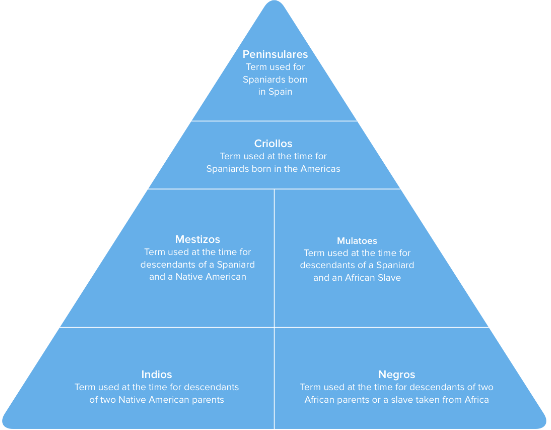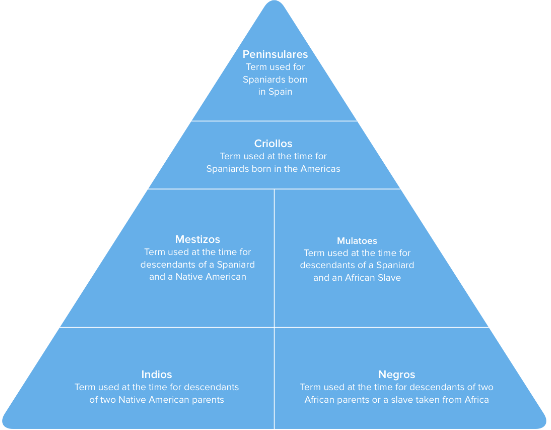History Unit 1 Test 3
1/20
There's no tags or description
Looks like no tags are added yet.
Name | Mastery | Learn | Test | Matching | Spaced | Call with Kai |
|---|
No study sessions yet.
21 Terms
Forced labor in East Africa?
Chattel slavery African
Africans from the interior were brought east as slaves. Established before Europeans. Help with resources/ slave trade. Domestic slave trade. Slaves used in armies. A lot of slaves were Arabic. Mined salt and traded ivory. |
Forced Labor West Africa?
Kinship(family) slavery
Wasn’t prominent in Islam until the Atlantic Slave Trade. Slaves in a kinship society had the same role as free members of society. Senegal was a catalyst for slave trade. Domestic slavery spread after the slave trade. |
Slavery In Southwest Asia
Household Slavery
Targeted Africans, Indians. Slaves exported to Central Asia and West Asia. Used for servitude for debt bondage. Armies. Not racially but culturally(Hindu). Muslims reintroduce slavery. Mild compared to Arab and transatlantic slave trade. |
Forced labor in Spanish America
Domestic slavery. Native American and African labor.
Domestic service, transportation, artisans, and mining, and rubber. Did “dirty work”. Males were divided into ethnicities and joined gangs. Men did most work. |
North America Slavery
Chattel slavery, Domestic slavery (in the house)
Enslaved people were treated as property and could be bought, sold, or given away. Invention of cotton gin increased demand. Most slaves worked on plantation. Major abuse. Political divide. Slaves in the North sold to the South. |
Modern Slavery
A modern form of slavery that is not supported by governments. Targets women a large amount for prostitution and labor isn’t the only reasoning behind why it is used.
Native American Enslavement
They were the first slaves used when the Americas were colonized and were susceptible to European diseases, which is the reason why they were later swapped for Africans. They were also enslaved under the encomienda system.
Encomienda System
A formal system of forced labor in Spanish colonies in Latin America and the Philippines, intended to encourage conquest and colonization. The plan was for Indians to give some of their time up to the Spanish settlers and in return they were protected however it ended up with the Spanish forcing very long work times upon the Indians without pay and many died.
The Racial Wealth Gap
When Africans were enslaved, they had no money so they couldn’t invest any, and those who did invest money back then are now very ahead of African-Americans in today’s economy.
Spanish Colonial Caste System
A Spanish caste system that gave people a class based on their place of birth and their race. Ex: Spaniards that were born in Spain were ranked higher than those who were born in America.

Class System v.s. Caste System
A class system is a system that is based off of your current social status (ex: money) while a caste system is a system given to you at birth and there is little to no mobility in a caste system. (caste = immobile)
Mercantilism
belief in the benefits of profitable trading; commercialism. It is the main motivation for the triangle trade and slaves in general.
Forced labor in the American Colonies
Forced labor was used in the American Colonies to cheaply create raw materials that they could then send to Europe (chattle slavery).
(They may have also worked inside of the house such as in the kitchen idk tho.)
Chattel slavery
Typical type of labor that is done to slaves
Sometimes racially motivated
Debt bonage
Farming/plantations
Economies(Banking, shipping, farming, etc.)
More men than women
Cotton Gin
Impacts of the Triangle Trade
The triangle trade resulted in a rampant in the Atlantic slave trade because Americans wanted to maximize their profits, so they had to import more slaves. This weakened Africa because their strongest men were being taken to go work. There was new connections made and communication made across the continents, along with an influx of wealth.
Describe similarities among regional slave practices
Similarities: Africans were used as slaves in East and West Africa, Southwest Asia, and the Americas. Slaves were enlisted into armies: East Africa, Southwest Asia. Africans were used as domestic slaves: Spanish America, indentured servants, East Asia. Slaves were put on the plantations: North and Spanish America.
Describe the difference between the intentions of the Encomienda System and its practice.
The Spaniards had said they were going to protect the Natives and care for them as long as they gave a share of their time to the Spanish however it ended up being an unfair deal where the Natives were condemned to extremely long unpaid labor that in many cases resulted in death.
Describe how mercantilism impacted the use of forced labor in the American colonies
Slaves were heavily used in order to produce more crops to make more money. Slave owners wanted to use free labor to maximize their profits. Ex: triangle trade.
Describe positive and negative aspects of the triangle trade
Cross Atlantic communication. Exchange of goods between continents. Cultural diffusion. There were slaves and their families, whose experiences were comprised of misery, deprivation and the loss of freedom
similarities and differences between chattel slavery and indentured servitude.
indentured servants ultimately attained their freedom once they completed their contract, while enslaved people were permanently denied their freedom unless they could obtain the means to purchase themselves or successfully escape. Indentured servants typically did housework such as cook while those under chattel slavery were typically field workers.
Describe similarities and differences between modern slavery and previous forms of forced labor
Much more prominent in children and women for prostitution, old slavery was highly supported by the government. Both involved in the exploitation of people to get them to do tasks against their will.
Describe how the Spanish Colonial Caste system led to discrimination and conflict
Different races treated as lower than others, which is extremely racialized
